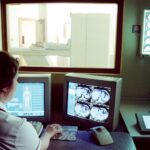Substance use disorders (SUDs) are complex conditions that affect millions worldwide. Accurate diagnosis is the crucial first step towards effective treatment and recovery. The “Diagnostic and Statistical Manual of Mental Disorders,” 5th Edition, Text Revision (DSM-5-TR), provides the gold standard criteria for diagnosing these disorders. This guide will delve into the DSM-5-TR criteria for SUDs, explaining what they are, how they are applied in diagnosis, and what the diagnostic process entails. Understanding these criteria is essential for individuals seeking help, their loved ones, and healthcare professionals involved in addiction treatment.
Understanding Substance Use Disorders
Substance use disorders are characterized by a pattern of problematic substance use that leads to clinically significant impairment or distress. These disorders encompass a wide range of substances, including alcohol, caffeine, cannabis, hallucinogens, inhalants, opioids, sedatives, hypnotics, anxiolytics, stimulants, and tobacco. The core issue in SUDs is the compulsive seeking and use of substances despite harmful consequences. This compulsion stems from the activation of the brain’s reward system, where substance use triggers intense feelings of pleasure or euphoria. This powerful reward can overshadow other life activities and priorities, leading to a cycle of dependence and addiction.
It’s important to differentiate between substance-use disorders and substance-induced disorders. While substance-use disorders are about the pattern of problematic use, substance-induced disorders are conditions like intoxication, withdrawal, and substance-related mental disorders that are directly caused by the effects of substances.
DSM-5-TR Criteria for Diagnosis of Substance Use Disorder
The DSM-5-TR outlines 11 specific criteria used to diagnose a substance use disorder. These criteria are grouped into four main categories: impaired control, social impairment, risky use, and pharmacological criteria (tolerance and withdrawal). A diagnosis of SUD is made when an individual meets at least two of these criteria within a 12-month period.
Here are the 11 DSM-5-TR criteria for substance use disorders:
- Taking the substance in larger amounts or for longer than intended: This refers to a loss of control over substance use, where individuals consume more of the substance or use it for longer periods than they initially planned.
- Wanting to cut down or stop using the substance but not managing to: This criterion highlights unsuccessful attempts to reduce or discontinue substance use despite recognizing the negative consequences.
- Spending a lot of time getting, using, or recovering from use of the substance: A significant amount of time is devoted to activities related to substance use, such as obtaining the substance, using it, or recovering from its effects. This can consume a large portion of the individual’s day.
- Cravings and urges to use the substance: Intense cravings or urges to use the substance are a hallmark of SUDs. These cravings can be overwhelming and contribute to continued use.
- Not managing to do what you should at work, home, or school because of substance use: Substance use leads to significant role impairment, affecting performance and responsibilities at work, school, or home.
- Continuing to use, even when it causes problems in relationships: Despite experiencing interpersonal problems directly caused or exacerbated by substance use, the individual continues to use the substance.
- Giving up important social, occupational, or recreational activities because of substance use: Important activities are reduced or given up entirely due to substance use. The individual may withdraw from hobbies, social events, or work-related activities.
- Using substances again and again, even when it puts you in danger: Recurrent substance use in situations where it is physically hazardous, such as driving under the influence or using substances in dangerous environments.
- Continuing to use, even when you know you have a physical or psychological problem that could have been caused or made worse by the substance: Persistent substance use despite awareness of having a persistent or recurrent physical or psychological problem that is likely to have been caused or exacerbated by substance use.
- Needing more of the substance to get the effect you want (tolerance): Tolerance is defined as needing markedly increased amounts of the substance to achieve intoxication or desired effect, or a markedly diminished effect with continued use of the same amount of the substance.
- Development of withdrawal symptoms, which can be relieved by taking more of the substance: Withdrawal symptoms occur when substance use is reduced or stopped. These symptoms are characteristic for each substance and can often be relieved by taking more of the substance or a similar substance.
:max_bytes(150000):strip_icc()/dsm-5-criteria-for-substance-use-disorders-21926_V2-c979cb0780134583bc6fa3a6f2315d63.png)
DSM-5-TR Substance Use Disorder Criteria: Eleven key indicators for diagnosis are categorized into impaired control, social problems, risky use, and physical dependence.
It’s crucial to understand that experiencing tolerance and withdrawal, particularly in the context of prescribed medications, does not automatically indicate a substance use disorder. These are expected physiological adaptations to certain medications. The diagnosis of SUD requires a comprehensive assessment considering the broader pattern of substance use and its impact on the individual’s life.
Severity Levels of Substance Use Disorders
The DSM-5-TR also specifies severity levels for substance use disorders based on the number of criteria met. This helps clinicians understand the extent of the problem and tailor treatment plans accordingly.
- Mild Substance Use Disorder: Meeting 2 to 3 criteria.
- Moderate Substance Use Disorder: Meeting 4 to 5 criteria.
- Severe Substance Use Disorder: Meeting 6 or more criteria.
Furthermore, clinicians can specify remission status, such as “in early remission,” “in sustained remission,” or “on maintenance therapy,” to provide a more detailed picture of the individual’s current state and progress in recovery.
The Diagnostic Process for Substance Use Disorder
Diagnosing a substance use disorder is a multi-faceted process that goes beyond simply identifying the presence of symptoms. It involves a comprehensive evaluation by qualified healthcare professionals, typically psychiatrists, psychologists, or licensed counselors specializing in addiction.
The diagnostic process usually includes the following steps:
-
Clinical Interview: A thorough clinical interview is the cornerstone of diagnosis. The healthcare professional will ask detailed questions about the individual’s substance use history, including:
- Types of substances used
- Frequency and amount of use
- Duration of use
- Patterns of use over time
- Consequences of substance use in various areas of life (work, relationships, health, legal)
- Attempts to cut down or control use
- Presence of cravings and withdrawal symptoms
-
Physical Examination and Medical History: A physical exam helps assess the individual’s overall health and identify any physical health problems that may be related to substance use. Gathering a detailed medical history is also crucial to understand co-occurring medical conditions and medications that might interact with substance use or treatment.
-
Psychological Assessment: Psychological assessments may include standardized questionnaires and assessment tools designed to evaluate substance use patterns, severity of addiction, and co-occurring mental health conditions. These tools can provide valuable quantitative data to support the diagnostic process.
-
Laboratory Tests (Optional): While there isn’t a single lab test to diagnose addiction, blood or urine tests can be used to detect recent substance use. These tests can be helpful in confirming self-reports, monitoring treatment progress, and identifying specific substances being used. However, it is crucial to remember that these tests alone cannot establish dependence or addiction.
-
Applying DSM-5-TR Criteria: Based on the information gathered from the clinical interview, physical exam, medical history, and psychological assessments, the healthcare professional will evaluate whether the individual meets the DSM-5-TR criteria for a substance use disorder. They will carefully consider each of the 11 criteria, the number of criteria met, and the severity level.
It’s essential to emphasize that the diagnosis of a substance use disorder is a clinical judgment made by a trained professional. It requires careful consideration of all available information and cannot be solely based on a checklist of symptoms.
Seeking Help After Diagnosis
Receiving a Diagnosis Of Substance Use Disorder can be a challenging and emotional experience. However, it’s also the first step towards recovery. Effective treatments are available, and recovery is possible with the right support and interventions.
Here are important steps to take after receiving a diagnosis:
-
Consult with a Treatment Specialist: Discuss treatment options with a healthcare professional specializing in addiction. They can help develop an individualized treatment plan based on the nature and severity of the SUD, co-occurring conditions, and personal preferences.
-
Explore Treatment Options: Various treatment options are available, including:
- Medical Detoxification: Medically supervised detoxification may be necessary, especially for substances like alcohol and opioids, to manage withdrawal symptoms safely and comfortably.
- Residential Treatment: Inpatient programs provide intensive treatment in a structured environment.
- Outpatient Treatment: Outpatient programs offer flexible treatment options while allowing individuals to live at home and maintain daily responsibilities.
- Day Treatment/Partial Hospitalization Programs: These programs offer structured treatment during the day while allowing individuals to return home in the evenings.
- Medication-Assisted Treatment (MAT): For certain SUDs, medications can be used to manage cravings, reduce withdrawal symptoms, and prevent relapse.
- Psychotherapy: Therapy, such as Cognitive Behavioral Therapy (CBT), Motivational Enhancement Therapy (MET), and contingency management, plays a vital role in addressing the underlying psychological and behavioral aspects of addiction.
- Support Groups: Peer support groups, such as Alcoholics Anonymous (AA) and Narcotics Anonymous (NA), provide invaluable support, encouragement, and a sense of community during recovery.
-
Build a Support System: Social support is crucial for successful recovery. Reach out to trusted friends, family members, or support groups for encouragement and understanding.
-
Utilize Available Resources: Organizations like the Substance Abuse and Mental Health Services Administration (SAMHSA) offer resources and helplines to connect individuals with treatment facilities and support services. The SAMHSA National Helpline at 1-800-662-4357 is a valuable resource for information and referrals.
Recovery from substance use disorder is a journey that requires commitment, support, and professional guidance. Understanding the diagnostic process and the DSM-5-TR criteria is a vital step in accessing appropriate treatment and embarking on the path to wellness.

